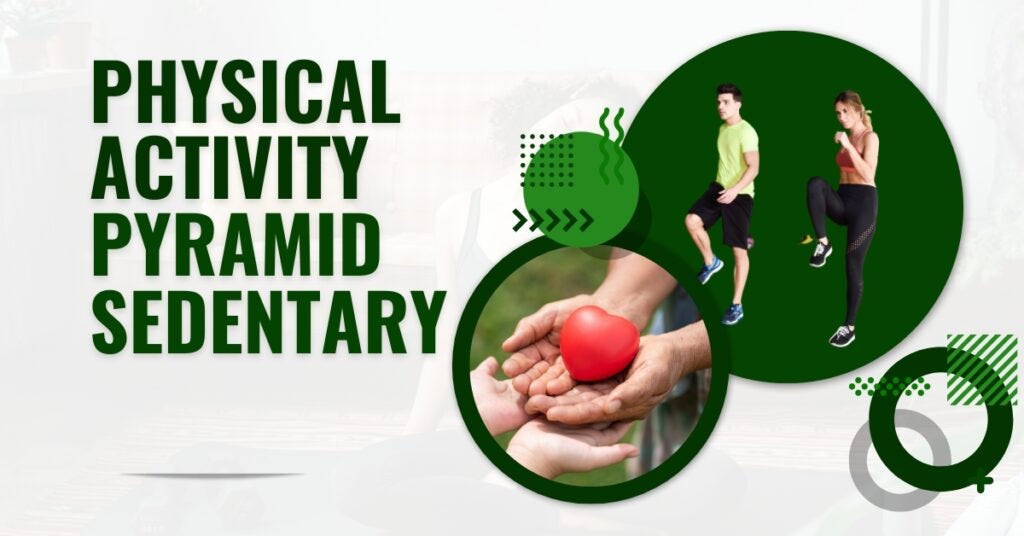The Physical Activity Pyramid: A Foundation for Lifelong Fitness
Maintaining a healthy lifestyle requires a balance between physical activity, diet, and rest. The Physical Activity Pyramid, a widely recognized tool developed by the American College of Sports Medicine (ACSM), provides a simple and effective framework for incorporating physical activity into your daily routine. This guide explores the different levels of the pyramid, emphasizing the importance of lifestyle activities as the foundation for a healthy and active life.
Understanding the Pyramid Structure:
The Physical Activity Pyramid resembles a food pyramid, with a broad base representing the most crucial activities and gradually tapering towards the top with activities recommended less frequently. Each level builds upon the one below, highlighting the importance of a comprehensive approach to physical activity.
Level 1: The Bedrock – Lifestyle Activities
The broadest and most essential level of the pyramid is comprised of lifestyle activities. These are activities woven into your daily routine that require moderate effort and contribute significantly to your overall physical activity levels. They are the cornerstone of a healthy lifestyle and should be performed daily or nearly every day.
- Examples of Lifestyle Activities:
- Walking (brisk walking at a pace where you can carry on a conversation but not sing)
- Climbing stairs
- Housework (cleaning, yard work, gardening)
- Taking the dog for a walk
- Playing actively with children
The Power of Lifestyle Activities:
Regular engagement in lifestyle activities offers numerous benefits:
- Improved Cardiovascular Health: Lifestyle activities strengthen your heart and improve circulation, reducing the risk of heart disease, stroke, and high blood pressure.
- Weight Management: Regular physical activity helps burn calories and maintain a healthy weight, reducing the risk of obesity and related health problems.
- Stronger Bones and Muscles: Lifestyle activities help build and maintain muscle mass and bone density, reducing the risk of osteoporosis and injuries.
- Enhanced Mood and Reduced Stress: Physical activity releases endorphins, hormones that have mood-boosting and stress-reducing effects.
- Increased Energy Levels: Regular physical activity can improve your stamina and overall energy levels throughout the day.
Beyond the Basics: Optimizing Your Lifestyle Activity
While seemingly simple, there are ways to maximize the benefits of lifestyle activities:
- Intensity Matters: Aim for at least 30 minutes of moderate-intensity activity most days of the week. A brisk walk where you can carry on a conversation but not sing is a good benchmark.
- Break it Up: If finding a 30-minute block is challenging, accumulate activity throughout the day. Take the stairs instead of the elevator, park further away from your destination, or do short bursts of activity like jumping jacks or squats during commercial breaks.
- Find Activities You Enjoy: Choose activities you find fun and engaging. This will make you more likely to stick with them in the long run.
Level 2: Building Upon the Foundation – Moderate-Intensity Aerobic Activities
The second level of the pyramid focuses on moderate-intensity aerobic activities. These activities require sustained effort for a longer duration and elevate your heart rate and breathing. They should be performed for at least 150 minutes per week.
- Examples of Moderate-Intensity Aerobic Activities:
- Brisk walking at a faster pace
- Swimming
- Biking at a leisurely pace
- Dancing
Levels 3 & 4: Reaching New Heights – Strengthening Activities and Other Activities
The upper levels of the pyramid encompass activities for muscle strengthening and flexibility, as well as vigorous-intensity aerobic activities. These activities are crucial for a well-rounded fitness program but are recommended less frequently than lifestyle activities.
Making Lifestyle Activities a Priority:
The Physical Activity Pyramid emphasizes the significance of lifestyle activities as the cornerstone of a healthy lifestyle. By incorporating these activities into your daily routine, you lay a strong foundation for overall fitness and well-being. Remember, small changes like taking the stairs or parking further away can make a significant difference in the long run.
FAQ: The Physical Activity Pyramid Explained
- How much time should I spend on lifestyle activities each day?
Aim for at least 30 minutes of moderate-intensity activity most days of the week. You can accumulate this time throughout the day with shorter bursts of activity.
- What if I can’t walk for 30 minutes straight?
Start with shorter durations and gradually increase the time as your fitness improves. Even small amounts of activity are beneficial.
- Do I need to join a gym to be active?
Absolutely not! Many lifestyle activities can be done at home, work, or outdoors without any equipment.
- What if I have a health condition?
Consult your doctor before starting any new exercise program, especially if you have any underlying health conditions.






More Stories
Where to Watch USMNT vs Jamaica National Football Team
How I Met My Monster
How Should a Ring Fit